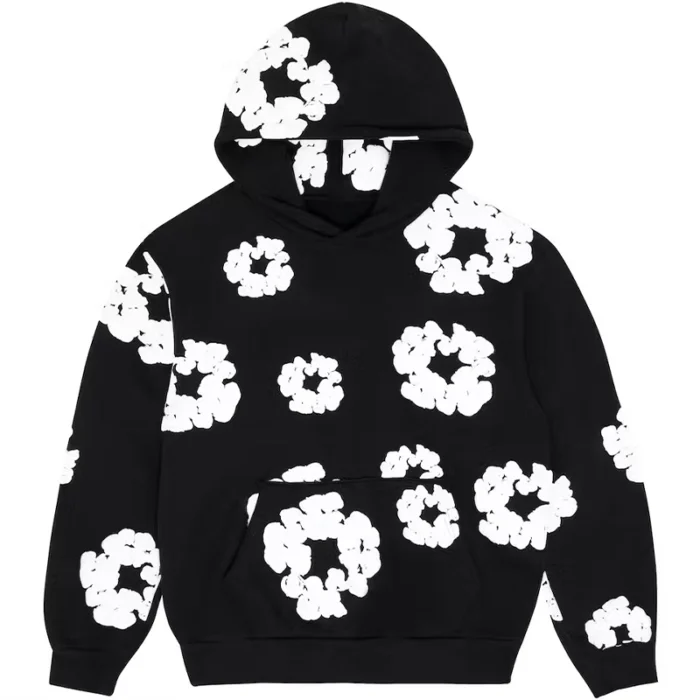Denim Tears is more than just a fashion label—it is a brand that resides at the intersection of art, fashion, culture, and social activism. Founded by Tremaine Emory in 2019, Denim Tears embodies a deep commitment to addressing historical narratives around Black identity, culture, and the African-American experience, primarily through fashion, but also through other forms of creative expression. The brand has gained widespread attention not only for its distinctive aesthetic but also for its capacity to merge streetwear with meaningful commentary on race, heritage, and resistance.
The Founder: Tremaine Emory
Tremaine Emory, also known as “Tremaine the Connoisseur,” is a multi-hyphenate creative who plays a crucial role in the worlds of fashion, art, and music. Before founding Denim Tears, Emory had already built a significant career through his creative agency No Vacancy Inn, co-founded with Acyde Odunlami, and worked closely with some of the most influential brands and cultural figures, including Kanye West, Virgil Abloh, and Stüssy. Emory’s work is informed by his cultural heritage as a Black man in America and a sense of responsibility to bring Black narratives to the forefront of creative industries.
His approach is not only about producing visually striking garments but also about using clothing as a medium to tell stories about the African diaspora, slavery, and the ongoing struggles of Black people in contemporary society. With Denim Tears, Emory has crafted a brand that resists the typical commercial narratives of fashion, opting instead to speak about the painful, yet empowering, histories that shape modern Black culture.
The Birth of Denim Tears: A Cultural Mission
When Tremaine Emory launched Denim Tears, his mission was clear: to use fashion as a platform to illuminate African-American history and honor the resilience of the Black community. His most iconic design, the cotton-wreath motif, has become synonymous with the brand and serves as a visual commentary on the deep-rooted history of Black enslavement in the United States, where cotton was a major crop harvested by enslaved Africans.
The wreath, printed on garments such as denim jeans, jackets, and t-shirts, acts as a symbol of mourning for the countless lives affected by slavery, but it also transforms into a symbol of resilience and survival. Through this potent imagery, Denim Tears turns fashion into an educational and emotional experience, reminding wearers of the generational trauma that persists but also of the strength and beauty that Black culture continues to display in the face of adversity.
The Impact of Iconic Collaborations
Denim Tears gained international recognition through a series of high-profile collaborations with globally respected brands. In 2020, Emory collaborated with Levi’s, one of the world’s most iconic denim brands, to release a collection that explored themes of African-American labor, particularly in the context of slavery. The Levi’s x Denim Tears collection featured jeans and jackets adorned with the cotton-wreath symbol, drawing a direct line between the history of Black labor and the fabric of denim itself, which was often worn by slaves in the American South.
Another significant collaboration came with Converse. Denim Tears reimagined Converse’s classic Chuck Taylor sneakers, adding symbolic elements like kente cloth-inspired designs that referenced African heritage. These collaborations extended beyond merely capitalizing on streetwear’s popularity; they were part of Emory’s larger effort to reshape fashion as a space for critical thought and conversation about race, identity, and history.
In 2023, Denim Tears made another massive cultural impact by collaborating with Dior, one of the leading luxury fashion houses in the world. The Dior x Denim Tears collection merged haute couture with the brand’s distinct social messaging, elevating Denim Tears’ cultural currency and solidifying Emory’s role as a key figure in both the streetwear and luxury fashion worlds. The collection was a meditation on African-American cultural icons and their influence on global style, with motifs that honored figures like James Baldwin, Langston Hughes, and the Harlem Renaissance.
Fashion as a Vehicle for Activism
His use of cotton in designs directly references the dark history of slavery in the United States, inviting reflection on how the legacy of that era continues to affect Black lives today.Moreover, the brand often collaborates with institutions and individuals that push for social change. Denim Tears has teamed up with visual artists, musicians, and grassroots organizations to create projects that blur the lines between fashion and political activism.
A Broader Artistic Vision
Denim Tears doesn’t limit itself to clothing. The brand is also an expansive art project. Emory views Denim Tears as a medium for exploring and expressing the Black experience in America, channeling history, art, and activism into every collection. The clothing produced by the brand is part of a larger ecosystem of art and design that challenges conventional definitions of what fashion can be.
Emory’s collections are often accompanied by multimedia elements, including film, photography, and music, which deepen the emotional resonance of the clothes. For instance, he has worked with photographers and filmmakers to create visual narratives that complement his designs, adding layers of meaning to the garments. These cross-disciplinary efforts have made Denim Tears not just a fashion label but a cultural movement that spans across creative industries.
Denim Tears and Streetwear Culture
Though its social messaging is central, Denim Tears also thrives as a brand within the world of streetwear—a subculture that has exploded into mainstream fashion in recent years. The brand’s offerings, which include denim jackets, graphic tees, and hoodies, align aesthetically with the broader trends in streetwear, but Denim Tears sets itself apart through its thought-provoking themes.
Streetwear, historically rooted in youth culture, skateboarding, and hip-hop, has often been about resistance, rebellion, and identity. Denim Tears taps into these same energies but gives them a more profound historical and cultural context. By wearing Denim Tears, consumers aren’t just participating in fashion—they are also engaging in a dialogue about Black history, racial injustice, and cultural pride.
This positioning has attracted a wide array of fans, from cultural tastemakers and celebrities to everyday individuals who resonate with the brand’s message.
The Future of Denim Tears
As Denim Tears continues to evolve, its focus remains firmly on combining fashion with activism. Tremaine Emory’s vision for Denim Tears extends far beyond trends or commercial success; it’s about legacy, culture, and the power of art to reshape our understanding of history.
In the future, Denim Tears is likely to continue its collaborative approach, working with more brands and artists to push boundaries and explore new narratives. Emory’s recent appointment as Creative Director of Supreme, another influential streetwear brand, suggests that his influence within the industry is only set to grow. Through Denim Tears, Emory has crafted a blueprint for how fashion can serve as a medium for activism, creativity, and cultural expression, leaving a lasting impact on the worlds of fashion and beyond.
In essence, Denim Tears is more than just a clothing brand—it’s a testament to the resilience of Black culture, a reflection of the ongoing struggle for justice, and a celebration of the art, beauty, and power that have always defined the Black experience.




